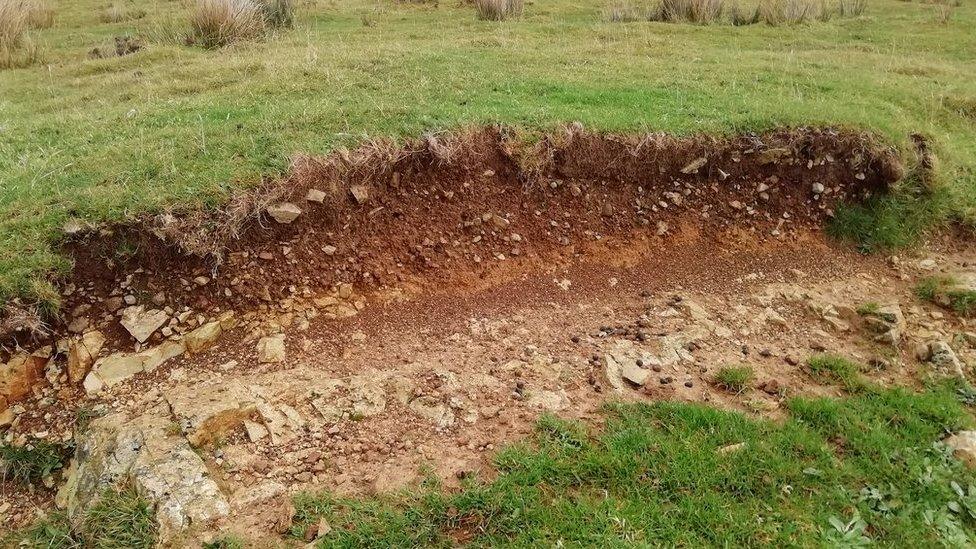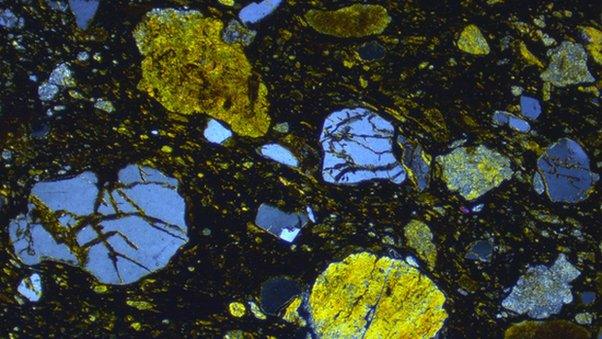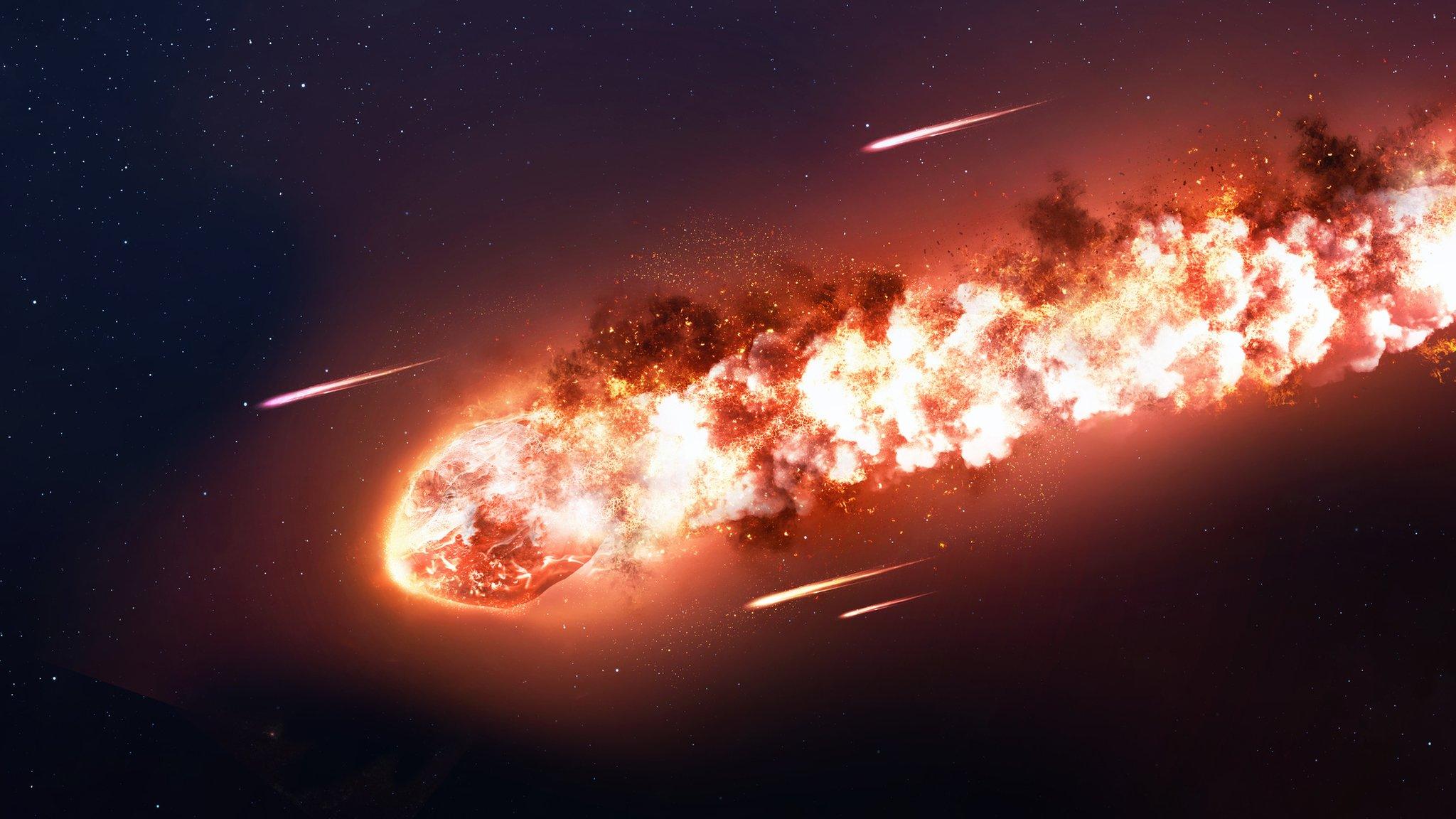Meteorite hunters dig up 60 million-year-old site in Skye
- Published

Niobium rich osbornite, a brown crystal, was recorded for the first time following 2017's discovery of the impact site
Efforts are to be made to protect part of a 60-million-year-old meteorite impact site in Skye.
Geologists believe deposits from the meteorite were dug up and taken away by meteorite hunters earlier this month.
Dr Simon Drake, who discovered the impact site with colleague Dr Andy Beard in 2017, said he was appalled by the damage.
He said plans were being made to shield the affected area, which is only a few metres across, with reinforced glass.
A tiny amount of rare minerals, measuring less than the diameter of a human hair, have been found at the so-called ejecta desposit site.
One of the minerals, a brown crystal called niobium rich osbornite (TiNbVN), had never been recorded until Drake and Beard's discovery last year.
The TiNbVN was found together with another mineral, vanadium rich osbornite (TiVN).

Dr Drake believes rocks were dug up and taken away by meteorite hunters
TiVN was previously found in a sample of the minerals that were collected as particles in the wake of comet Wild-2 by Nasa's Stardust mission in 2006.
Dr Drake said the minerals had been found in such tiny amounts and at microscopic size that anyone taking - or buying - the rock from Skye would have no idea if their sample contained them.
Mini digger
Dr Drake said local crofters and Scottish government representatives were involved in the plan to protect the site from further damage.
The Birkbeck, University of London, geologist said: "The glass would prevent further samples from being taken from this fragile site, but would still allow students and children on school trips to visit the site and see what is there."
A plaque explaining what is under the glass has also been proposed, he said.
On the damage caused to site, Dr Drake said: "Up to a cubic metre of rock has been removed.
"The right-hand side of the outcrop has been cut into using a mini digger and picks and shovels.
"Four or five hundred fist-sized pieces of loose rock have also been taken."
Dr Drake said another part of the meteoric ejecta deposit was on land owned by the John Muir Trust and that the conservation charity was keen to keep this area protected.
He appealed to people not collect samples.
- Published17 September 2018

- Published14 December 2017

- Published14 September 2016
